It was a long time I wanted Dr. Perry Nickelston of “Stop Chasing Pain” to share his thoughts with OmniFamily. For those of you who don’t know Dr. Nickelston, here is a summary from www.stopchasingpain.com.
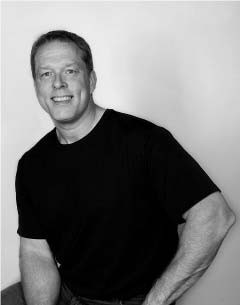 “Dr. Perry Nickelston is a Chiropractic Sports Physician with primary focus on Performance Enhancement and Corrective Exercise, Metabolic Fitness Nutrition and trained from The American College of Addictionology and Compulsive Disorders. He is an expert in myofascial, orthopedic, medical and trigger point soft tissue therapy.
“Dr. Perry Nickelston is a Chiropractic Sports Physician with primary focus on Performance Enhancement and Corrective Exercise, Metabolic Fitness Nutrition and trained from The American College of Addictionology and Compulsive Disorders. He is an expert in myofascial, orthopedic, medical and trigger point soft tissue therapy.
A member of the Board of Directors and Medical Staff Advisor for AIMLA (American Institute for Medical Laser Application), Dr. Perry teaches healthcare professionals all over the world how to successfully use Class IV Deep Tissue Laser Therapy in alleviating pain.
Dr. Perry is an expert in movement assessment and diagnosis. Certified and trained as a Functional Movement Specialist (FMS) and Selective Functional Movement Assessment Specialist (SFMA). He uses programs designed to find your cause of painful dysfunction and correct it so you feel better.
He is regular columnist for Dynamic Chiropractic Journal and writes for industry trade publications in health and fitness. After suffering a severe back injury and recovering with laser therapy, he dedicated himself to offering this amazing treatment to others. Dr. Perry created a revolutionary integrated therapy program with an extremely high success rate.
He is a 1997 graduate from Palmer Chiropractic University and a master fitness trainer with over 20 years experience in the health industry. Dr. Perry is currently publishing several books on health, fitness and laser therapy available soon from this website.”
In short, Dr.Perry is my biggest real-world ‘movement’ mentor! His view of ‘physical pain’ and why it is there has not only intrigued me since the beginning of my career but has totally changed my entire practice of training and assessing clients and chasing pain source since. I have been learning tons of stuff from Doc and couldn’t hold back letting you know him!
Dr. Nickelston has been kind enough to take some time out of his super busy schedule to let me interview him. This interview will change your perception of pain and how you treat it next time you have one!
Read on to discover Dr.Perry’s tips on moving smarter! As a bonus Stop Chasing Pain shares his secrets to weight loss and training as well!
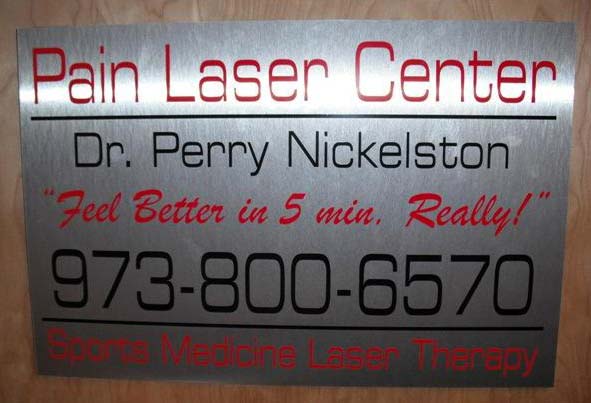 * Dr.Perry! Our whole team at Omnifarious is a huge fan base of “Stop Chasing Pain”. Can you please tell our readers a little bit about your background and why you started “SCP”?
* Dr.Perry! Our whole team at Omnifarious is a huge fan base of “Stop Chasing Pain”. Can you please tell our readers a little bit about your background and why you started “SCP”?
Thank you for the very kind words. It is an honor for me to be a part of your blog and thank you for asking me to share information with your readers. I love hearing that my work inspires others. Empowering people to take back control of their life from pain and reaching personal health and fitness goals is my mission. It is my ‘Why?’ My belief is people don’t buy ‘what’ you do; they buy ‘why’ you do it! When people ask ‘why’ I do what I do, this is the reason.I started out in healthcare as a chiropractor, but honestly it never truly resonated with me. Don’t get me wrong, chiropractic is an effective tool for helping people in pain. I use it when clinically indicated. However, it is just ONE tool. A carpenter can’t build a house with just one tool, and you can’t heal the body with just one tool either. I knew there had to be more. People kept asking me, ‘Why does my pain keep coming back?’ I never had an answer. That is until I discovered the work of my mentor Gray Cook, PT. His book 'Athletic Body In Balance' changed my entire paradigm and professional career.
I created Stop Chasing Pain as a vehicle for teaching people how to eliminate pain by treating the underlying source, not just the site. My paradigm is very simple; ‘Pain is where your problem ended up, not where it started!’ X never marks the spot, and pain only tells you there is a problem. It does not tell you where the problem is located.
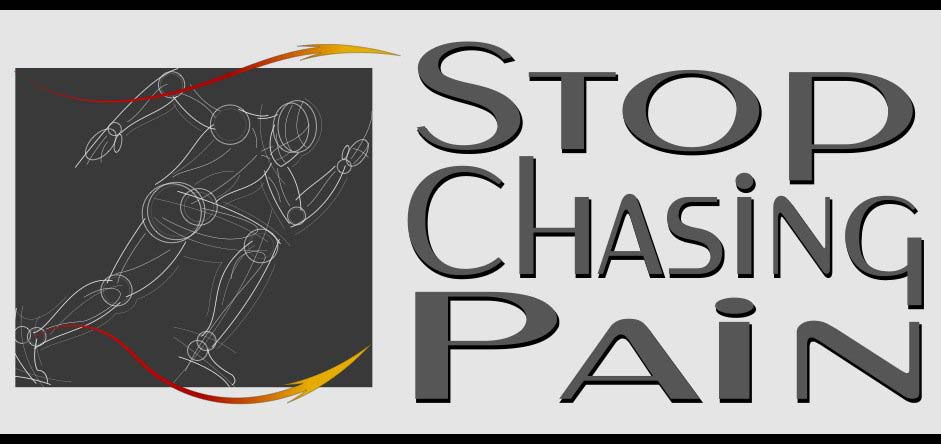 * I actually love the name “Stop Chasing Pain”. What made you choose this name?
* I actually love the name “Stop Chasing Pain”. What made you choose this name?
Thank you very much. It does have a nice ring to it! Lol The name says exactly what my ‘WHY’ is all about. There is no mistaking what it means. Every time I wear my Stop Chasing Pain shirt, someone asks me about the name. So I must be onto something. How did I choose the name? Well, I kind of like to think that it chose me. It was two years ago and I was taking the SFMA (Selective Functional Movement Assessment) course in New Jersey being taught by my mentors, Gray Cook, 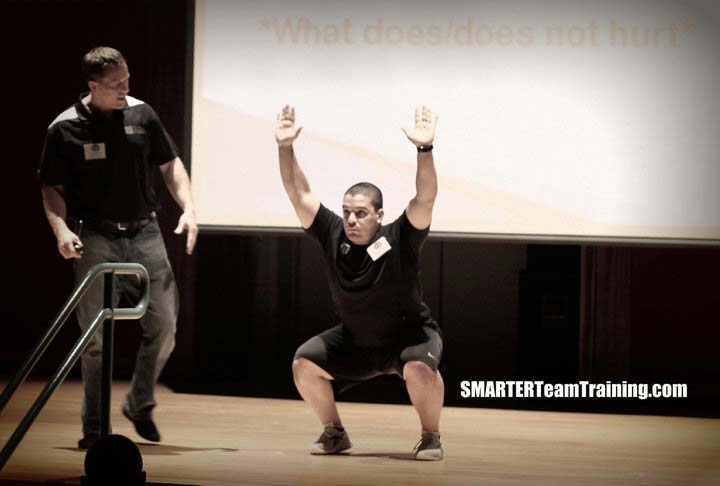 Kyle Kiesel and Charlie Weingroff. All of whom are now very good friends of mine. One of the slides during the first day presentation had just the words ‘Stop Chasing Pain’ written in big bold letters. And I was like, BAM!! That is brilliant. That was the moment everything came together with the answer I had been searching for all along. My mind immediately said, ‘This is a great line. I wonder if it has been taken yet as a business name or domain name?’ J That night I did an internet and trademark search to see if it was available. And as it turned out, the Universe left it open. The name was still available, so I registered it ASAP. That day, the Stop Chasing Pain brand was born. It was like everything coincided for that very moment. The logo for Stop Chasing Pain was actually created by a patient of mine named Kristen Frahn. LINK She is an amazing graphic artist and created the logo on first draft. I told her what my vision was for SCP and she nailed it! Perfection! She captured the very essence of what I was trying to communicate.
Kyle Kiesel and Charlie Weingroff. All of whom are now very good friends of mine. One of the slides during the first day presentation had just the words ‘Stop Chasing Pain’ written in big bold letters. And I was like, BAM!! That is brilliant. That was the moment everything came together with the answer I had been searching for all along. My mind immediately said, ‘This is a great line. I wonder if it has been taken yet as a business name or domain name?’ J That night I did an internet and trademark search to see if it was available. And as it turned out, the Universe left it open. The name was still available, so I registered it ASAP. That day, the Stop Chasing Pain brand was born. It was like everything coincided for that very moment. The logo for Stop Chasing Pain was actually created by a patient of mine named Kristen Frahn. LINK She is an amazing graphic artist and created the logo on first draft. I told her what my vision was for SCP and she nailed it! Perfection! She captured the very essence of what I was trying to communicate.* “The site of pain is normally the site of compensation”. Can you please give us an example?
Yes, site of pain and source of pain are two very different things indeed. In healthcare today, too many clinicians are chasing the site of pain and people are needlessly suffering. Legendary physician Cyriax one said, 'He who chases pain is forever lost.' Brilliant statement!!!. The man had it so right. Ties back into my brand Stop Chasing Pain. Sometimes you just gotta get out of your own way and think outside the proverbial box. Medicine throws everything at the site of pain hoping it will go away. It’s like a shock and awe approach in the quest for pain relief. The body has one single purpose when it is under duress; survival and adaptation. It will do whatever it must to keep you breathing and moving, regardless if it’s in your best long term interest. Your survival mechanism is only concerned about the here and now. It does not care about tomorrow. It does not care about 5-minutes from now. Now is the only thing your brain knows! For example, say someone starts to complain about knee pain and they have no idea why it started to hurt. There was no traumatic onset or event. It just started to hurt when they were walking down stairs. First reaction is to just ignore it and hope it goes away. Happens all the time. Human nature to ignore pain until it gets bad enough to take action. When the pain refuses to go away, they may throw ice on it, heat, or take some over the counter pain medication. If that does not help they go to the doctor, who takes x-rays that typically come out negative. They prescribe stronger pain medication and anti inflammatory drugs to lessen the pain and refer you for physical therapy. The medication provides only temporary relief and physical therapy is typically done just on the knee. Yet, the pain still returns and now it’s been weeks. Most people would just give up or eventually hear the ever popular words from the doctor, ‘You just gotta learn to live with it or consider surgery.’ Nice options. My SCP line of thinking is wondering WHY you got the pain in the first place. Why did it happen on one knee and not the other?
For example, say someone starts to complain about knee pain and they have no idea why it started to hurt. There was no traumatic onset or event. It just started to hurt when they were walking down stairs. First reaction is to just ignore it and hope it goes away. Happens all the time. Human nature to ignore pain until it gets bad enough to take action. When the pain refuses to go away, they may throw ice on it, heat, or take some over the counter pain medication. If that does not help they go to the doctor, who takes x-rays that typically come out negative. They prescribe stronger pain medication and anti inflammatory drugs to lessen the pain and refer you for physical therapy. The medication provides only temporary relief and physical therapy is typically done just on the knee. Yet, the pain still returns and now it’s been weeks. Most people would just give up or eventually hear the ever popular words from the doctor, ‘You just gotta learn to live with it or consider surgery.’ Nice options. My SCP line of thinking is wondering WHY you got the pain in the first place. Why did it happen on one knee and not the other?The types of therapies which have not worked to resolve a problem tell me a lot about the ones that will. If all of these therapies have been done to the knee and the patient is not any better, then perhaps it’s not a knee problem. Makes common sense right? Unfortunately common sense is not so common. Insanity I tell ya! It blows my mind every time I see it. Insanity is doing the same thing over and over expecting a different result. If you are not making a positive change in outcomes, then for goodness sakes change what you are doing. What confuses people even more is realizing the painful area is typically the one place actually working right! (Might want to read that one again) The painful area is the compensation site for a dysfunction somewhere else in the kinetic movement chain. Fix the NON-PAINFUL area to help the painful site! Site versus source in all its glory. Imagine that? This is the SFMA paradigm 101. So in the case of our knee pain example; it is usually a dysfunctional movement in the ankle or hip joint that is causing too much stress on the knee. The knee is simply over working and it lets you know that by sending you a pain signal. Fix the ankle and hip to help stabilize the knee. Remember, pain only tells you there is a problem, it does not tell you what or where the problem is located. Classic case of Chasing Pain!
* We have people complaining of back pain more than ever. Do you think people are now suffering back pain more than they used to 20 years ago? What do you think is the problem? Have we not evolved enough from being on all fours? Or has it to do more with other stuff like sitting too much or moving less?
Over 80% of the US population will suffer from some type of back pain in their lives. I would actually put that rate higher because some people never seek medical attention for their pain. They just deal with it as best they can. In my opinion, we are more sedentary and therein lies the problem. We simply don't move anymore. We may evolved mentally since we were running around catching our food, but I think we have regressed physically. Back pain is rarely caused from the back itself. Oh, the back may hurt alright, but the question is WHY? There goes that why question again? Lol I contend the back is hurting because our are hips are stiff and locked down, glutes don't engage when we need them for support, the core system is weak, our ankles are not mobile, and the thoracic spine is restricted in movement. No wonder our back hurts. It does not stand a chance!So the first lesson I teach all chronic back pain sufferers is to strengthen your glutes, increase hip mobility paired with stability, check the ankles, train the core (it's not about planks) and rotate that upper back. Watch what happens to the back. I guarantee it will feel better. It's just a matter of movement! Take for example a diagnosed non- traumatic onset disc herniation. In my eyes, a disc herniation is not the diagnosis. The herniation is a symptom of an underlying movement dysfunction. The disc herniated by default. I treat the disc herniation of course because it is causing pain at the site from chemical damage done to cells. However the SCP paradigm traces to the source of dysfunction and treats that too. I attack from both sides. In the case of traumatically induced pain syndrome I contend there will be inherent dysfunction long after pain resolves because the brain and nervous system had to adapt with compensations to protect you during the injury. Your nervous system still moves in the same compensation pattern after pain goes away until you teach it differently. Why? That's it's job. If those compensations are not uncovered there will pain somewhere else in the body later. It's a cycle. But the cycle can be broken when you understand how the brain, nervous system and body interrelate. I don't mean anatomy and physiology. I mean the intricate relationship between these systems and the role they play in your quality of movement.
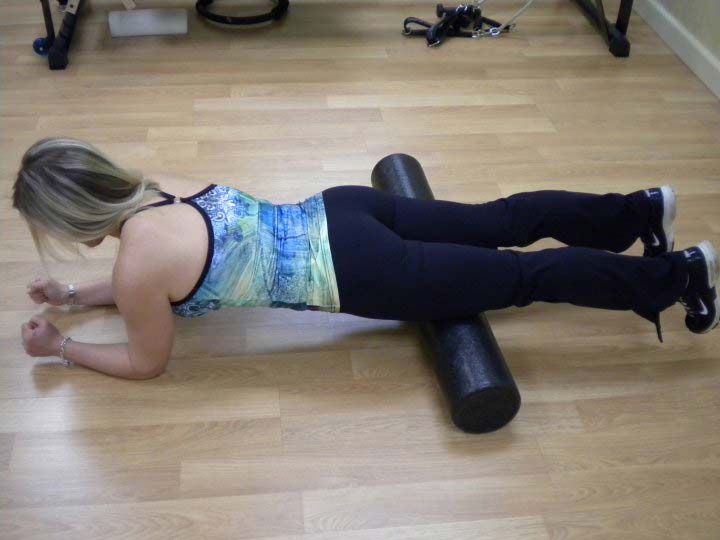 * Some of Omnifarious clients skip their foam rolling and warm-up in the gym and get to the workout right away. What do you have to tell them regarding foam rolling and proper warm-up?
* Some of Omnifarious clients skip their foam rolling and warm-up in the gym and get to the workout right away. What do you have to tell them regarding foam rolling and proper warm-up?
There is a little secret I learned from a really great Speed Coach that is the key to motivating people and it's a phenomena known as 'Perceived Relevance.' What does this mean? Another term some people may recognize; WIIFM, 'What's in it for me?' People don't do anything until they understand the benefit for themselves. How clients perceive foam rolling is the key. And everyone has their own perception. This is where individuality comes into play. For example, the relevance of foam rolling for an athlete trying to enhance performance will be very different than the client who is simply trying to lose weight and get into better shape. You must motivate them differently because their 'why' is different. To the athlete you can say, 'Foam roll before your workout because it will improve your speed, durability and recovery times so you have an edge during competition.' Say that to a fat loss client and they could care less! However, to the fat loss client you can say, 'Foam roll before your workout to get warmed up, increasing blood flow so you can use muscles more efficiently during exercise, then we can push you at higher intensity burning more calories for maximum fat loss.' Same outcome, totally different method of delivery. You must understand the fine art of personal communication and motivation if you want to succeed in any business or profession.* Can you shortly explain the roll of Fascia and its importance in proper movement patterns and pain reduction?
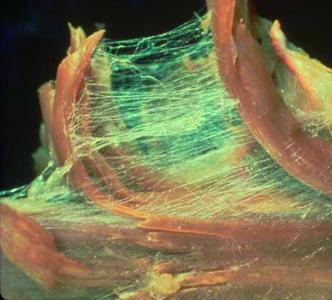 Shortly? That is tough to do on this topic. I could write forever on this one. Lol Fascia means everything. Understanding the role of fascia is the little known secret weapon to better movement and chronic pain relief. Fascia is the intricate connective tissue matrix of the body and it interconnects with everything (muscle, bone, ligament, nerves, internal organs, etc) Thomas Myers a brilliant anatomist did incredible work with discovering fascial connective tissue networks in human cadavers and formulated what he calls Fascial Lines or Slings mapped over the body. If there is a restriction, adhesion, or 'snag' anywhere along these fascial lines it can cause tension and stress in another part of that line. For example, the Superficial Back Line originates on the plantar surface of the foot, runs up the legs, buttock, back, neck, head, and ends above the orbit of the eyes. You may have a snag in the thoracic spine of this line that can cause a pull on the heel or skull, leading to foot or head pain. Now you can understand where the Stop Chasing Pain paradigm comes into the thought process. Fascia is highly innervated, yet has a poor blood supply and this combination sets the stage for chronic pain. In my clinical opinion, every pain syndrome has a soft tissue (fascia, trigger points) component that must be treated. If you neglect this system in your therapy, training, or rehab program the client will never be able to return to optimum function.
Shortly? That is tough to do on this topic. I could write forever on this one. Lol Fascia means everything. Understanding the role of fascia is the little known secret weapon to better movement and chronic pain relief. Fascia is the intricate connective tissue matrix of the body and it interconnects with everything (muscle, bone, ligament, nerves, internal organs, etc) Thomas Myers a brilliant anatomist did incredible work with discovering fascial connective tissue networks in human cadavers and formulated what he calls Fascial Lines or Slings mapped over the body. If there is a restriction, adhesion, or 'snag' anywhere along these fascial lines it can cause tension and stress in another part of that line. For example, the Superficial Back Line originates on the plantar surface of the foot, runs up the legs, buttock, back, neck, head, and ends above the orbit of the eyes. You may have a snag in the thoracic spine of this line that can cause a pull on the heel or skull, leading to foot or head pain. Now you can understand where the Stop Chasing Pain paradigm comes into the thought process. Fascia is highly innervated, yet has a poor blood supply and this combination sets the stage for chronic pain. In my clinical opinion, every pain syndrome has a soft tissue (fascia, trigger points) component that must be treated. If you neglect this system in your therapy, training, or rehab program the client will never be able to return to optimum function.* Stiff hip=Shoulder Problems. True or false?
TRUE This relates to fascia. There is a soft tissue connection of fascia from the opposite hip to opposite shoulder. An 'X' cross body pattern if you can picture that. Restriction in one area will ultimately affect the other. Every case of shoulder pain should have both hips evaluated for a Fascial connection restriction and vice versa. In chronic shoulder pain cases I always find this relationship. Start working on the soft tissue of the hip and back, increase range of motion in that hip and you can often see a dramatic change rather quickly in shoulder pain. Also checking the thoraco-lumbar fascia, scapular stability, and proper latissimus activation strength. Weak lats and glutes are a big problem in shoulder problems.* Stiff ankles=Back Pain. True or false?
TRUE. Again, it's the kinetic chain connection of the body at work. Restriction in ankle motion, particularly dorsiflexion, alters the gait cycle mechanism every time you take a step. Because of that restriction you must know increase motion somewhere else in the body. Muscles, ligaments, and fascia must now adapt to a restriction in motion. All of these structures attach to bone. Other joints far away from the ankle become compromised. Ankle restriction negatively impacts hip extension which feeds the weak Glute syndrome and perpetuates a tight hip flexor antagonistic muscle. The back is caught in the middle once again! The poor back never catches a break. The lesson here is to always evaluate ankle motion in relationship to back pain. Actually it should be evaluated in every musculoskeletal pain syndrome. Just a smart idea since it's usually a culprit in movement dysfunction and impairment syndromes.* Are you a fan of barefoot training? What’s the catch working out barefoot? How is it better than say ‘Nike Runners’?
To be honest I don't know enough about the topic to give you an informed answer. I can tell you that most people have horrendous foot mechanics. Their feet pronote (flat feet) throwing off the entire kinetic chain of movement. The 'Joint by Joint' relationship is altered from the foundation. There is a term called 'Joint Centration' in regards to stability that is important to discuss at this point. Joint centration means the body will actually approximate bones together in order to gain proper stability in areas where it does not have it. The foot is a prime example. If the ankle, hip and core are not adequately stable your body will flatten the foot (joint centration) to widen it's base of support. If you go trying to run on that flat base with no support you can say goodbye to your other joints. Not to mention the inefficient movement patterns you develop leading to decreased endurance, poor performance, and a significant loss of durability. So, I guess you can figure out my answer from that thought process.* Your patients love you and your magical laser that you heal people with! It’s going to take some time until people on this side of the world hear about it :) Can you please briefly explain how your deep tissue laser therapy works and how effective it can be in relieving pain and physical therapy?
 Haha. Yes the magic laser. In my opinion it works magic everyday in the lives of people. I would never practice without it! Deep tissue laser is the most incredible therapeutic treatment modality I have ever used in my 14 years of clinical practice. I use the LiteCure Medical 'LightForce EX' 15Watt Deep Tissue Laser. This is High power Class 4 laser, not Class 3 power laser. What's the difference? They are both therapy lasers, however Class 4 has significantly more power and deeper penetration. These factors determine treatment dosage and outcomes. Higher power means higher dose and penetration, thus better success rates. I use laser for every musculoskeletal pain condition you can name. I have seen it all!
Haha. Yes the magic laser. In my opinion it works magic everyday in the lives of people. I would never practice without it! Deep tissue laser is the most incredible therapeutic treatment modality I have ever used in my 14 years of clinical practice. I use the LiteCure Medical 'LightForce EX' 15Watt Deep Tissue Laser. This is High power Class 4 laser, not Class 3 power laser. What's the difference? They are both therapy lasers, however Class 4 has significantly more power and deeper penetration. These factors determine treatment dosage and outcomes. Higher power means higher dose and penetration, thus better success rates. I use laser for every musculoskeletal pain condition you can name. I have seen it all!The basic premise behind how laser therapy works is easy to understand if you think in terms of plant photosynthesis. Remember that term from biology class you never thought you would see again? Lol Well here it is! It is process by which plant cells regenerate via light stimulation, and in this case sunlight. Photo means light. Laser therapy regenerates human tissue via a similar process known as 'Photobiomodulation' where certain wavelengths of laser light stimulate cellular regeneration and recovery. Whenever you have pain in the body you have chemically damaged cells and that is how you perceive pain. Your nervous system transmits signals to the brain via energy when it is stimulated by the chemical irritants that were released when damaged. Pain does not go away until the chemical damage disappears. That's what medication attempts to do, block the chemical signal. Blocking and healing are totally different approaches. Laser on the other hand actually regenerates the cellular damage so you get out of pain AND heal! Once the cell is exposed to laser therapy light with the proper dosage parameters it responds. It always does! It's the inherent properties of how all living organisms react to light. They can't not!
But just like any tool, it’s only as good as the skill of the person using it. I combine laser with Stop Chasing Pain movement assessment and this takes my success rates to new levels. There is an art to using laser and it comes from being in tune with the individual you are treating. I don't treat pain, I treat people. Each person brings a uniqueness to the assessment I must perform. The history of the individual tells me many things about the cause of pain. People makes the difference.
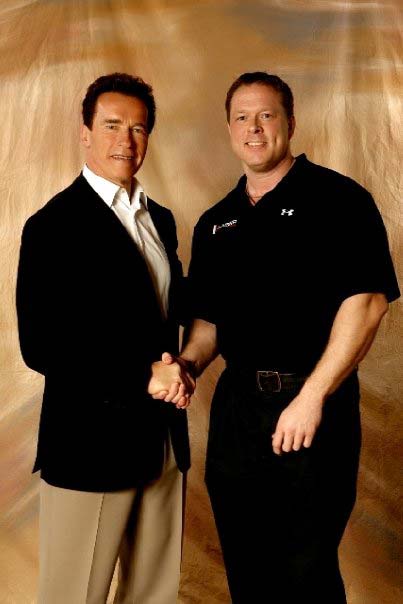 * You have been in the health industry for more than 20 years. You have also worked with the top industry leaders. What’s the mistake people make in the gyms?
* You have been in the health industry for more than 20 years. You have also worked with the top industry leaders. What’s the mistake people make in the gyms?
Hard to pick just one because I see so many. Lol Sad but true. It's amazing how many people continue to make these mistakes year after year despite the massive amounts of information available to teach them different. Unfortunately, even when people discover their mistakes they keep doing them anyway. It's a pattern they just can’t or won't break away from for some reason.I will give you my Top 3.
- Overtraining: People exercise way too much. Too many days without rest and too much time during each session. They never give their body a chance to recover and regenerate. Rest is the silent workout! Meaning, you make better progress by increasing intensity, decreasing volume, and getting adequate rest. Exercise breaks the body down. Rest and proper nutrition builds it up. More is not better. Better is better!
- Doing too much cardio and not enough strength training. People get on the hamster wheel treadmill (my term of affection for treadmills) and go forever trying to burn calories when they should be lifting weights to build lean muscle and increase their metabolism. Women are more guilty of this than men. They have this stigma about getting bulky with weights, so they crank out cardio like crazy. If they did more toning and less treadmill they would get the body they want.
- No variety: People do the same old thing all the time and they stop making progress. They get bored and frustrated and instead of changing their routine they just do more of it. Thus feeding the overtraining syndrome. Change up the intensity, get off machines and use bodyweight movements. Variety is the spice of life, and muscle!
* What’s your #1 nutrition tip?
Abs are built in the kitchen, not the gym. What you eat in private shows in public. These are great phrases used by my friend Gregg Miele, a personal trainer in California and owner of selfdiscipline.com. Nutrition is the absolute best, simplest, and fastest way to drastically change your physique. Notice I did not say easy. If you don't get the nutrition, you don't get the body. My number one tip depends on what your goal is with training. Is it fat loss or performance? Is it muscle gain or speed? I will give you a tip for fat loss because that seems to be the biggest one most people are after when they exercise. Ok here it is...portion control is a big problem for most people. They either don't eat at all or often enough. If they do eat it's usually out of control binges with super-sized portions a la the American Culture. Mike Roussell who is a good friend of mine and a PhD in nutrition taught me this portion control rule that I have found extremely helpful. It's called the 'Eat and Eat Again Rule.' It's really quite simple. Whatever you eat during your meal, can you eat the same amount two hours later? If not, then you have too much on your plate. This also helps you stay true to eating 4-5 times per day. And what the heck, I will throw in one more nutrition tip that worked great for me. No carbohydrates for breakfast, only fats and proteins. Carbohydrate intake is at first snack of the day and not before. Make sure it is a complex one.* What do you think is/are the cause of obesity in 21st century?
Sedentary lifestyle and high fructose corn syrup. We eat too many processed foods and not enough natural organic whole foods. Nutrient dense foods are virtually gone from the average American diet. Our hormones are all over the place from the processed foods causing insulin spikes and blood sugar chaos. Hormones control everything. Every time you eat something hormones are released. Hormones determine how good you look and feel. Optimizing hormones is the key to a healthy body and lean physique. If you have a weight problem, you have a hormone balance problem. Your fat storage hormones are overtaking the fat burning ones. Until you flick that switch the other direction you don't lose weight. Also self discipline and control are factors. It's not easy to get in shape and maintain it. There are no quick fixes. It takes commitment, dedication, perseverance, hard work and an attitude of strength to get a nice body. If a great body came in a bottle we would all have one. In the end it comes down to the individual. How bad do you want it? Don't blame anyone but yourself. Put down the crap and move your body.
* Deadlift is often neglected in program design especially in this part of the world, partly because trainers don’t know how to teach and progress it properly, and partly because it takes time to teach to a newbie. How important do you think the Deadlift is in a trainee’s toolbox?
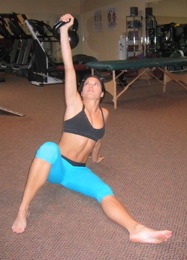 Next to the Turkish Get-Up I would say a deadlift is the perfect movement. Interestingly, both take tremendous body awareness and coaching to master. I strongly believe that you should not squat until you can learn to deadlift. You must earn the right to squat by owning the deadlift first. It is such a primal pattern of movement when we are toddlers and we lose it as we get older and more sedentary. Watch a toddler pick up a ball. They will do a deep squat to pick it up. Nobody taught them how to do that or that they should do that because it is an innate movement. It's only when we get older, lazy, and can’t hinge at the hips that we bend over at the waist forgetting about the powerful glutes and legs. We rely on the lower back to lift instead of the glutes and legs, thus beginning the vicious cycle of back pain.
Next to the Turkish Get-Up I would say a deadlift is the perfect movement. Interestingly, both take tremendous body awareness and coaching to master. I strongly believe that you should not squat until you can learn to deadlift. You must earn the right to squat by owning the deadlift first. It is such a primal pattern of movement when we are toddlers and we lose it as we get older and more sedentary. Watch a toddler pick up a ball. They will do a deep squat to pick it up. Nobody taught them how to do that or that they should do that because it is an innate movement. It's only when we get older, lazy, and can’t hinge at the hips that we bend over at the waist forgetting about the powerful glutes and legs. We rely on the lower back to lift instead of the glutes and legs, thus beginning the vicious cycle of back pain.In my opinion, next to Farmer Walks, the deadlift is the single best exercise to change your body. It is a full body movement requiring major muscle power, strength, mobility, and stability. It is not easy to perform correctly and most people do them horribly wrong. I cringe every time I see a teenage athlete attempting what they call a deadlift. It's a wonder their spine does not explode out of their back. When they get older, the body will send them a big signal of pain thanking them for all that abuse. Deadlifts need proper coaching and cueing. This is where the role of a strength coach and trainer are essential. And please make sure you can deadlift correctly before you begin to teach someone else. Nothing looks worse than seeing a fitness professional bastardize a good deadlift. Own it before you teach it! Coaches need coaches too :)
* What is Gray Cooks views on the Deadlift? Does he think it should be abandoned?
 I can't speak for Gray's opinion and thought process on this one, but I do know he made a video with Brett Jones on how to do a deadlift correctly. It was called 'Secrets of Core Training: The Backside' and aptly so. Notice it did not say ‘The Abs.’ lol As such, I would hazard to guess he is a fan of the deadlift, if it is done correctly. Gray is a movement based guy. Hence naming his book, 'Movement!' Lol Sort of makes sense when ya think about it. A deadlift is pure form of movement and demonstrates a person’s ability to fire the core, hinge the hips, pack the neck, and engage the lats. If you can do all that with a fair amount of weight to challenge yourself, it is a great indicator of just how well you can move.
I can't speak for Gray's opinion and thought process on this one, but I do know he made a video with Brett Jones on how to do a deadlift correctly. It was called 'Secrets of Core Training: The Backside' and aptly so. Notice it did not say ‘The Abs.’ lol As such, I would hazard to guess he is a fan of the deadlift, if it is done correctly. Gray is a movement based guy. Hence naming his book, 'Movement!' Lol Sort of makes sense when ya think about it. A deadlift is pure form of movement and demonstrates a person’s ability to fire the core, hinge the hips, pack the neck, and engage the lats. If you can do all that with a fair amount of weight to challenge yourself, it is a great indicator of just how well you can move.If someone can nail an overhead squat movement during my assessment and execute a proper deadlift they are ranked high in my top tier of movement. I can open up the training on them to an entirely different level than someone who cannot perform those movements. Don't mistake a nice looking physique with one that can actually move well. Many athletes look great, but are disastrous on movement patterning. They are great compensators. They have a nice looking outside appearance, but nothing under the hood! Sort of like a Ferrari body with a Prius engine. It's what's underneath that matters in the end.
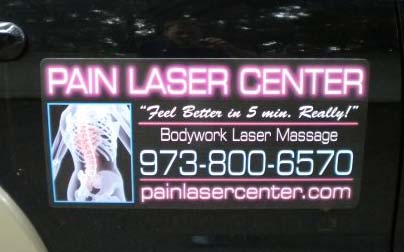 * Where can people find more about you and your work?
* Where can people find more about you and your work?
I am not too difficult to miss. Lol. Do a simple Google search on my name and you will find a plethora of information and links to all of my published works. You can visit me directly on my website stopchasingpain.com and it has links to all of my social media sites, articles, podcasts, blogs, etc. That is the central hub of everything Stop Chasing Pain. My new website should be launching any day now complete with interactive blogs and links to my upcoming books, videos, DVD's and a Calendar of Events for upcoming seminars and workshops.* Do you like to share anything else with our readers?
Yes, feel free to reach out anytime with questions or comments. I am always here to help. I have an online mentorship program and also do consultations. If you want to learn more about those programs they are located on my website. One last bit of advice is top never stop learning. Always try to become better than you were yesterday. Coach Robert Dos Remedios once said, 'If you are doing the same thing today that you were doing a year ago, you are an asshole!' That pretty much says it all. That's classic Dos for ya. Love that guy, happens to be a dear friend and one of the first guests on my Stop Chasing Pain podcast channel. Learn, learn, learn!* Thank you very much for your time Dr.Perry. Appreciate all the great information.
You are very welcome my friend. It's all about sharing and teaching others. Thanks again for the invite to share with your readers. It was way fun. Love this stuff!
Twitter: @stopchasingpain | Youtube: njlaserdoctor | Instagram: stopchasingpain
blog comments powered by Disqus
